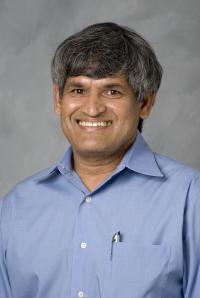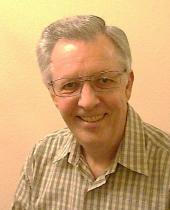 Think of it as Photoshop for antenna measurement—computer augmentation of data collected to assess different aspects of antenna performance. That’s the concept behind the project proposed by Ronald Pogorzelski and Sembiam Rengarajan and recently funded by the U.S. Army. Pogorzelski, an adjunct faculty member in the Department of Electrical and Computer Engineering, and Rengarajan, a professor in the department, received a Short-Term Innovative Research (STIR) grant to develop computational methods and algorithms for post-measurement data processing.
Think of it as Photoshop for antenna measurement—computer augmentation of data collected to assess different aspects of antenna performance. That’s the concept behind the project proposed by Ronald Pogorzelski and Sembiam Rengarajan and recently funded by the U.S. Army. Pogorzelski, an adjunct faculty member in the Department of Electrical and Computer Engineering, and Rengarajan, a professor in the department, received a Short-Term Innovative Research (STIR) grant to develop computational methods and algorithms for post-measurement data processing.
The army must assess its antennas to verify that they meet specifications, and to accomplish that, it has built highly sophisticated, very costly facilities. But Pogorzelski and Rengarajan’s premise is that the capabilities of today’s computers are so much greater than those of computers 20 or so years ago that it might be more productive to collect data using more modest instruments and then process it through a computer afterward to improve the results.
“You can spend a lot of money trying to make a measurement system as nearly perfect as possible,” Pogorzelski says. “But once you buy the computer, it’s essentially free to use, so you can spend hours if need be, massaging raw data to reveal features you couldn’t otherwise see in it.”
If Pogorzelski and Rengarajan’s approach is successful, it should become more efficient and far more cost-effective to carry out assessments computationally rather than spend large sums of money to build new antenna measurement facilities.
 The pair are currently developing the techniques and trying to determine the capabilities and limits of their concept. As part of the project, they have been having some of the instruments in the college’s aging Antenna Measurement Lab refurbished so the lab can serve as their primary test bed. They are also hoping to borrow and test antennas from area companies to ensure that their techniques are as widely applicable as possible.
The pair are currently developing the techniques and trying to determine the capabilities and limits of their concept. As part of the project, they have been having some of the instruments in the college’s aging Antenna Measurement Lab refurbished so the lab can serve as their primary test bed. They are also hoping to borrow and test antennas from area companies to ensure that their techniques are as widely applicable as possible.
The project does not currently involve students, but once the lab has a working set of equipment, the two hope to put together an undergraduate lab course in antenna measurements—a subject that is usually reserved for graduate-level studies. For now, however, they are focused on fulfilling the terms of the grant, which began September 1 and runs through the end of May 2014. If their results are as good as they expect, they may be able to leverage the findings for additional funding.
